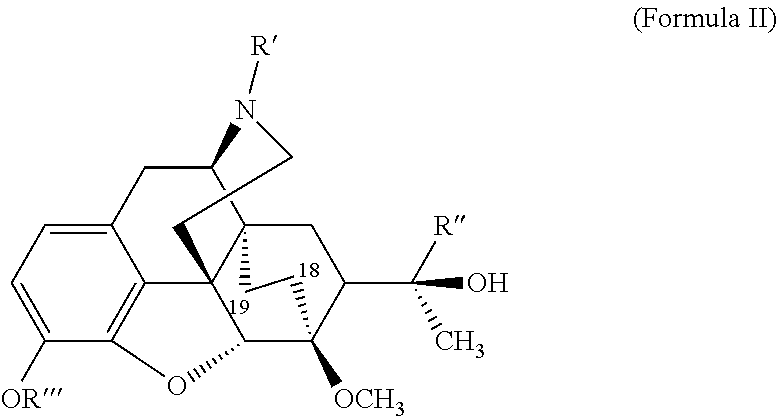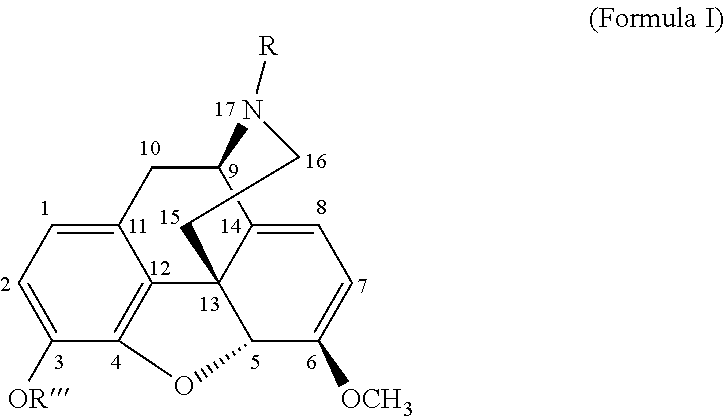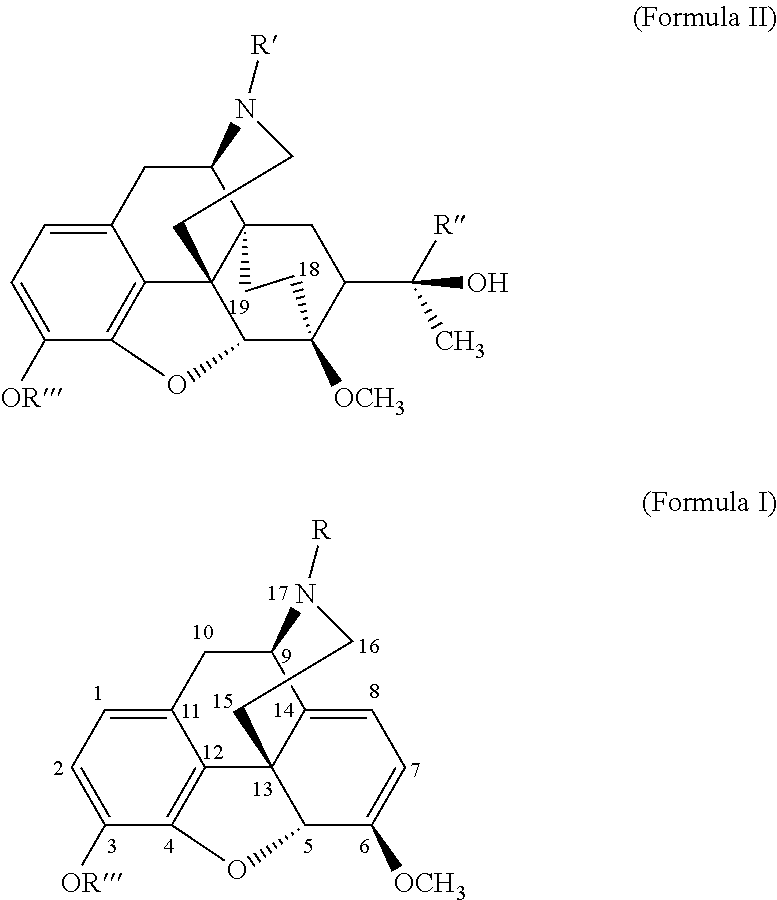Method of manufacturing buprenorphine and analogues thereof from oripavine
a technology of oripavine and buprenorphine, which is applied in the field of manufacturing methods of oripavine buprenorphine and analogues thereof, can solve the problems of limited use of thebaine as starting material, low yield in some critical steps, and number of steps, so as to reduce production cost and ecological impact, and facilitate production.
- Summary
- Abstract
- Description
- Claims
- Application Information
AI Technical Summary
Benefits of technology
Problems solved by technology
Method used
Image
Examples
example 1
[0113]N-cyclopropyl methyl nororipavine was synthesized using procedures as known from literature. For example the route proposed by Werner et al. (Werner, L.; Machara, A.; Adams, D. R.; Cox, D. P.; Hudlicky, T.; J. Org. Chem. 2011, 76, 4628-4634) is convenient and has a yield between 27% (chloride as halogenide) up to 55% (bromide as halogenide).
example 2
1-[(5α,7α)-17-(cyclopropyl methyl)-4,5-epoxy-3-hydroxy-6-methoxy-6,14-ethenomorphinan-7-yl]-ethanone
[0114]N-cyclopropyl methyl nororipavine from example 1 (10.0 g, 29.64 mmol) was dissolved in ethanol (60 mL). Hydroquinone (65 mg, 0.593 mmol) and methyl vinyl ketone (5.19 mL, 63.72 mmol) were added. The reaction mixture was stirred at 88° C. for 16 hrs. Thereafter, thin layer chromatography indicated no starting material. The mixture was partially distilled to give 15.0 g of distillate. The solution was cooled slowly to 0° C. during 12 hrs. and filtrated to give the desired product (8.45 g, 70%). The analyses were in agreement with literature data.
example 3
18,19-dehydrobuprenorphine
[0115]A solution of tertiary butyl magnesium chloride (2 molar) in diethyl ether (3.1 mL) was added to tertiary butyl methyl ether (MTBE) (3.5 g). The solution was distilled to give 1.5 g of distillate. Tert-butyl methyl ether (3.5 g) was added, and the resulting mixture was distilled to give 1.5 g of distillate. This step was repeated with 2 g of tert-butyl methyl ether to give 2 g of distillate. 1[(5α, 7α)-17-(cyclopropylmethyl)-4,5-epoxy-3-hydroxy-6-methoxy-6,14-ethenomorphinan-7-yl]ethanone (0.5 g, 1.223 mmol) from example 2, dissolved in dioxane (2.5 g), was added slowly during 15 minutes at 20° C. to 22° C. The resulting white mixture was stirred during 4 h at 60° C. and then cooled to 0° C. The reaction was quenched with a saturated NH4Cl solution (10 mL). After separation, the aqueous layer was extracted twice with ethyl acetate (AcOEt, 2 times 10.0 mL). The combined organic layers were dried over MgSO4 and concentrated. The crude product was purifi...
PUM
| Property | Measurement | Unit |
|---|---|---|
| temperature | aaaaa | aaaaa |
| temperature | aaaaa | aaaaa |
| temperature | aaaaa | aaaaa |
Abstract
Description
Claims
Application Information
 Login to View More
Login to View More - R&D
- Intellectual Property
- Life Sciences
- Materials
- Tech Scout
- Unparalleled Data Quality
- Higher Quality Content
- 60% Fewer Hallucinations
Browse by: Latest US Patents, China's latest patents, Technical Efficacy Thesaurus, Application Domain, Technology Topic, Popular Technical Reports.
© 2025 PatSnap. All rights reserved.Legal|Privacy policy|Modern Slavery Act Transparency Statement|Sitemap|About US| Contact US: help@patsnap.com



